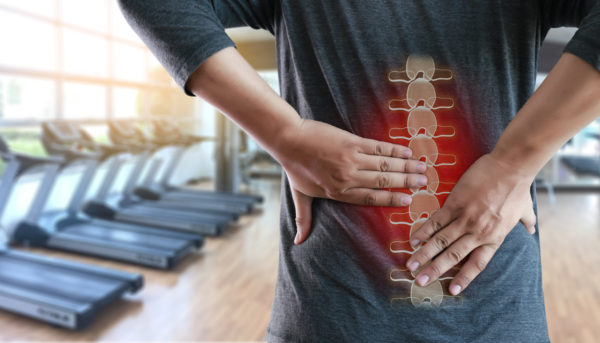Posted on November 17, 2017 by SMPC - News

Have you been wondering what could be causing you to experience the following symptoms? Walking with pain, feeling numbness or ‘pins and needles’ in your hands or feet, muscle cramps, pain in your thighs and buttocks that worsens when standing, muscle weakness, even impaired bladder or bowel control. These symptoms may all be related to one specific cause: Spinal Stenosis.
What Causes Spinal Stenosis?
Spinal Stenosis, also called Spinal Narrowing, is a narrowing of the open spaces in the spine that puts pressure on the nerves and spinal cord, resulting in pain, numbness, cramping, and problems with movement. Aging is the usual culprit. Spinal Stenosis is common if you are over 50, however younger people may get Spinal Stenosis if they have been born with a narrow spinal canal. Other causes may be Osteoarthritis, spinal tumors, calcium deposits, and Paget’s disease.
Research shows that the pain from spinal stenosis can mimic pain brought about by other spinal disorders. For most patients the condition develops slowly over time. It is quite rare for the condition to be brought about by a single incident.
Is Surgery The Best and Only Answer?
Not exactly. For some patients with spinal stenosis, surgery is a last resort to relieve pressure on the effected nerves in the spine. Surgery is usually reserved for patients with neurologic weakness in the affected extremities. Your first step to relief from your chronic pain is to talk with a board certified pain physician at Southern Michigan Pain Consultants. Southern Michigan Pain Consultants offer various treatment options including Nerve block treatments or injections of anesthetic medication with anti- inflammatory medications. Oral nonsteroidal anti-inflammatory medications in conjunction with pain medications may be useful as well in treating the pain.
What About Physical Therapy, Osteopathic Manipulative Medicine and Behavioral Therapy?
Southern Michigan Pain Consultants may also utilize physical therapy or osteopathic manipulative medicine that can address functional impairments through the use of physical manipulation and prescribed exercises to normalize and optimize musculoskeletal function to help reduce pain. Behavioral interventions, including biofeedback and muscle relaxation training, in conjunction with counseling are used for patients with recurring pain when all other methods fail. The goal is to develop coping mechanisms to live more productively with the residual pain.



